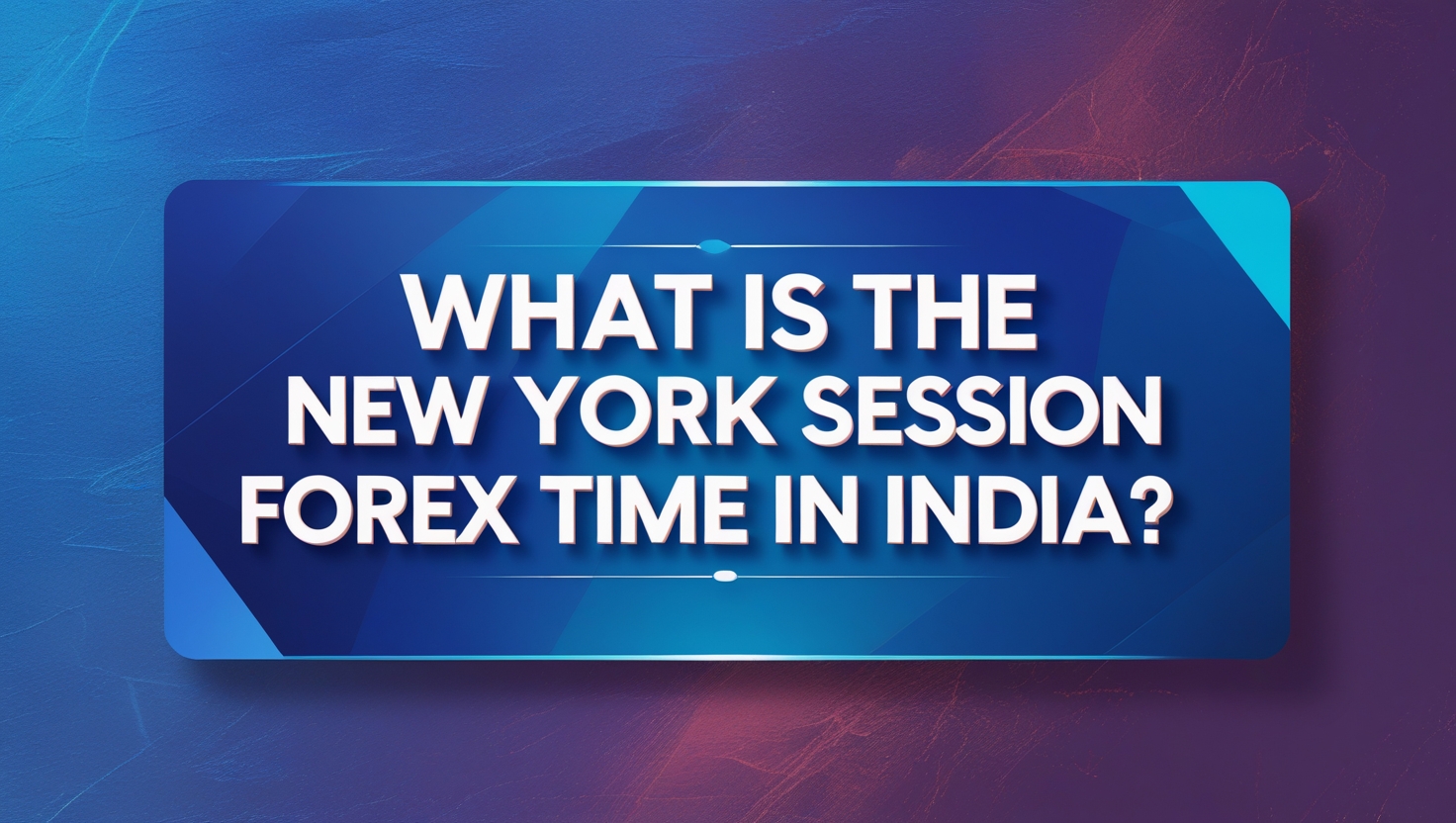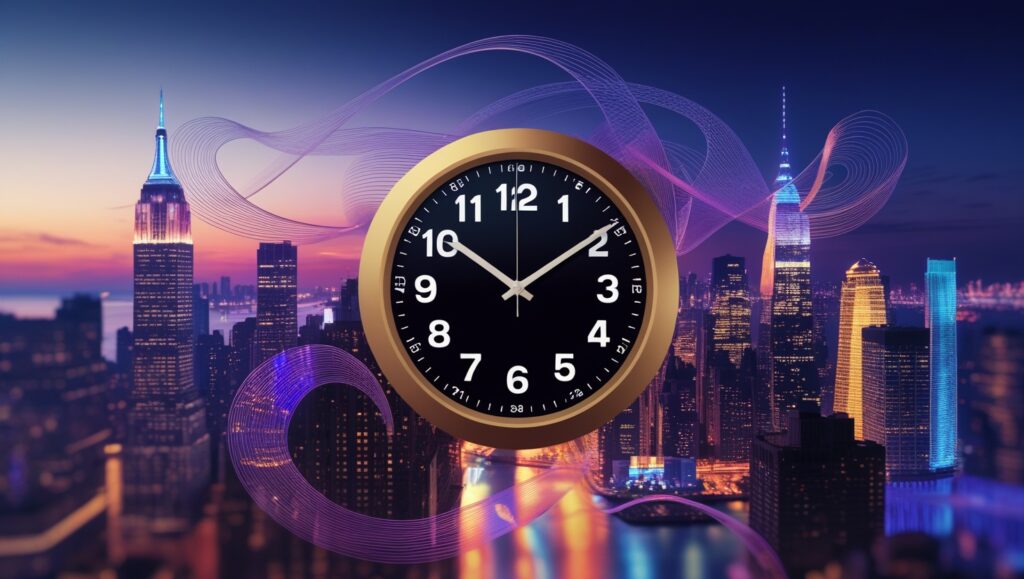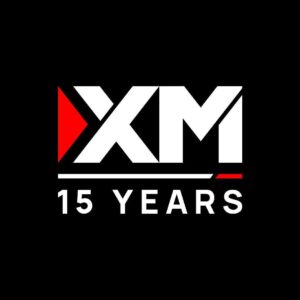
Forex markets operate 24 hours a day across four major trading sessions (Sydney, Tokyo, London, New York). For Indian traders, the New York session forex time in India spans the late evening to early morning hours. Under standard (winter) time, the New York session runs from 6:30 PM to 2:30 AM IST. During U.S. Daylight Saving Time (roughly March to November), clocks shift one hour forward, so in India the New York session shifts to about 5:30 PM to 1:30 AM IST. In UTC terms, the New York session is 1:00 PM–10:00 PM (UTC) under standard time, which translates to the India timings above.
Understanding these times is crucial for planning trades. The New York session overlaps with Europe’s London session every evening India time. This overlap (approximately 6:30–9:30 PM IST) creates the highest liquidity and volatility of the day. Major U.S. economic news and market moves also arrive during New York hours, affecting currency pairs globally. Thus Indian traders often monitor the New York session despite its late hours, especially for USD-related pairs.
Overview: New York Session Forex Time in India
| Aspect | Details | Impact for Indian Traders |
|---|---|---|
| Session Hours (Winter) | 6:30 PM – 3:30 AM IST | Late evening trading window, requires planning |
| Session Hours (Summer/DST) | 5:30 PM – 2:30 AM IST | Starts 1 hour earlier during US Daylight Saving |
| Golden Overlap Window | 6:30 PM – 9:30 PM IST | Highest liquidity & volatility when NY + London overlap |
| Trading Volume | 50%+ of global forex volume | Tighter spreads, larger pip movements |
| Best Currency Pairs | EUR/USD, GBP/USD, USD/JPY, USD/INR | Maximum volatility in USD-based pairs |
| Economic News Impact | Major US data releases during session | Sharp price movements, trading opportunities |
Strategic Insights
New York Session Forex Time in India (Standard vs Daylight Saving Time)
The New York forex session opens at 8:00 AM Eastern Time (ET) and closes at 5:00 PM ET. Converted to India time, this corresponds to 6:30 PM–3:30 AM IST under Eastern Standard Time (EST, UTC–5) and 5:30 PM–2:30 AM IST under Eastern Daylight Time (EDT, UTC–4). For simplicity, most references use 6:30 PM–2:30 AM IST as the New York session hours (with the understanding that in summer it starts one hour earlier).
DST in the U.S. (second Sunday in March to first Sunday in November) causes this one-hour shift. For example, in June (as of this writing, mid-2025), the New York session opens at 5:30 PM IST and closes at 2:30 AM IST. Outside DST (winter months), it opens at 6:30 PM and closes at 3:30 AM. These times are static reference points – they do not change daily and do not rely on live converters. Below is a static conversion table showing the four major sessions in Indian Standard Time, under normal and DST conditions:
| Session | Open (IST, Standard) | Close (IST, Standard) | Open (IST, DST) | Close (IST, DST) |
|---|---|---|---|---|
| Sydney | 2:30 AM | 11:30 AM | 1:30 AM | 10:30 AM |
| Tokyo | 5:30 AM | 2:30 PM | 5:30 AM | 2:30 PM |
| London | 1:30 PM | 9:30 PM | 1:30 PM | 9:30 PM |
| New York | 6:30 PM | 3:30 AM | 5:30 PM | 2:30 AM |
Table: Major Forex Session hours in Indian Standard Time (IST). “DST” columns apply when the respective market is on Daylight Saving Time.
Sydney and London sessions observe DST opposite to each other (southern vs northern hemisphere), whereas Tokyo does not shift. In practice, Indian traders should note the New York session starts at 5:30 PM IST during U.S. summer and 6:30 PM IST during winter.
Importance of the New York Session for Indian Traders

For Indian forex traders, the New York session is important despite its late hours. It carries two key advantages:
- High Liquidity and Volatility: The New York session overlaps with London for about three hours each evening (India time). This overlap is “typically when liquidity is at its best and trading volumes are at their highest,” says Michael Brown, market analyst at Pepperstone. During this window, spreads tighten and price swings widen, creating profit opportunities. David Morrison of Trade Nation adds that traders can “benefit from greater liquidity” during these overlaps. In short, the early New York hours often produce the largest pip moves of the day.
- Impact of U.S. Economic News: The U.S. dollar’s moves heavily influence global forex. Major announcements (Fed statements, employment reports, ISM surveys, etc.) are released during New York session time. For example, a U.S. jobs report at 7:30 PM IST can spark sharp volatility. Indian traders focusing on USD-based pairs (e.g. USD/INR, EUR/USD) must monitor New York sessions for these catalysts.
By contrast, the Tokyo session (morning India time) tends to see quieter ranges, and Sydney is the calmest. The London session (afternoon India time) has more volume, but reaches its peak when New York joins in. Thus many Indian traders target the 6:30–10:30 PM IST window where London and New York overlap.
As one industry guide notes,
“Traders often prefer to trade when these sessions overlap, particularly during the London-New York overlap, as this is typically when liquidity is at its best”.
“It is unsurprising that traders often seek to trade when these sessions overlap… when liquidity is at its best and trading volumes are at their highest,”
says Michael Brown of Pepperstone. David Morrison of Trade Nation agrees, noting that traders may benefit from “greater liquidity” during these times.
In practical terms, Indian forex traders should plan trades around the New York session overlap. For example, a day trader might open positions on EUR/USD around 6:30 PM IST and close them before midnight. Swing traders also watch for breakout moves in that window. However, it’s also late at night, so not all traders can monitor real-time. Many set alerts or use automated orders to capture New York session moves.
Overall, the New York session, combined with London, provides the richest environment for forex trading out of India. Timing trades to these hours – and adjusting for DST – is a key strategy for maximizing opportunities in the INR and global currency markets.
Forex Session Times in India: Sydney, Tokyo, London and New York

Each forex session is named for its financial center. In IST, the four sessions occur as follows:
- Sydney Session (Australia) – The week begins in Sydney. This session typically runs from 2:30 AM to 11:30 AM IST (Standard) and 1:30 AM to 10:30 AM IST (DST). Trading volume is usually light compared to other sessions.
- Tokyo Session (Asia) – Starts after Sydney, roughly 5:30 AM to 2:30 PM IST (both Standard and DST, since Japan has no DST). Tokyo overlaps slightly with Sydney early on, and tends to increase Asian-pair volatility.
- London Session (Europe) – Opens around 1:30 PM IST and closes 9:30 PM IST (unchanged by DST in terms of IST because the UK shift does not affect UTC-based hours). This is the busiest session, with high liquidity especially in EUR, GBP and CHF pairs.
- New York Session (North America) – As above, roughly 6:30 PM–3:30 AM IST (winter) or 5:30 PM–2:30 AM IST (summer). It overlaps with late London, making it the second-most active period.
The static conversion table and chart illustrate that Indian traders are active at unconventional hours for New York session trades. In India, the official trading window for INR currency futures is 9:00 AM–7:30 PM IST, but global currency pairs (USD/INR, USD/JPY, EUR/USD, etc.) can be traded around the clock through ECN brokers. Therefore, knowing session times helps plan strategy.
Notably, session overlaps drive market volume. When London and New York are both open (about 6:30–9:30 PM IST), forex volumes soar. According to Babypips, “The highest trading volume occurs during the overlap of the London and New York trading sessions… More than 50% of trading volume occurs at these two financial centers”. This surge causes volatile moves in major pairs like EUR/USD, GBP/USD, and USD/JPY.
Conclusion
The New York forex session in India runs from approximately 6:30 PM to 3:30 AM IST (winter) or 5:30 PM to 2:30 AM IST (summer). This late-evening session overlaps with London trading and unleashes high liquidity and volatility. Indian traders who know these session times can strategically plan their trades around the New York and London overlap – roughly 6:30–10:30 PM IST – when USD and INR pairs are most active. In practice, using these fixed conversion times (as given above) and watching U.S. market news can help improve trade timing.
Practical takeaways: Be aware of the seasonal (DST) shift each spring/fall so you don’t miss the start of the New York session. Use the provided session table as a quick reference for IST trading hours. Finally, remember expert advice: focus on sessions’ overlaps for maximum liquidity, but always manage risk since high volume can also mean sharper swings.
FAQs
What are the New York forex session hours in Indian Standard Time?
In Indian Standard Time (IST), the New York session typically runs during the late evening to early morning. For example, Indian traders note it usually starts around 5:30 PM IST and can extend into the early morningreligareonline.com. Global data indicates the session spans roughly 12:00–22:00 GMT, which is about 5:30 PM–3:30 AM IST during standard time and 13:00–23:00 GMT (≈6:30 PM–4:30 AM IST) during U.S. daylight-saving monthsaxi.comaxi.com.
How does Daylight Saving Time affect forex session times in India?
In India, DST shifts the New York session by one hour. For example, Axi reports that during U.S. daylight saving the session runs 1:00 PM–11:00 PM GMT (≈6:30 PM–4:30 AM IST) instead of 12:00 PM–10:00 PM GMT (≈5:30 PM–3:30 AM IST)axi.comaxi.com. In other words, when U.S. clocks spring forward, the session starts an hour later by IST, and when they fall back it starts an hour earlieraxi.comaxi.com.
Why is the New York session important for Indian forex traders?
For Indian traders, the New York session is often the most active period of the day. It overlaps the London session, creating “some of the most volatile periods in Forex trading”avatrade.com, and brings very high liquidity. StarTrader notes that when the U.S. and London sessions combine, they produce the highest trading volume globallystartrader.com. Many major U.S. economic releases occur during this time, so it frequently offers prime trading opportunities (albeit at late hours)avatrade.comstartrader.com.
What are the forex market hours in India?
The global Forex market is open 24 hours a day (Monday–Friday), but in India trading is mostly limited to exchange hours. Indian exchanges (like NSE) allow INR currency trading roughly from 9:00 AM to 5:00 PM IST, with cross-currency futures extending until about 7:30 PM ISTreligareonline.com. Traders can still access the market outside these hours through international forex brokers. By comparison, the worldwide forex market runs from Sunday evening (IST) to Friday evening (IST)myfxbook.com, reflecting continuous trading across time zones.

















